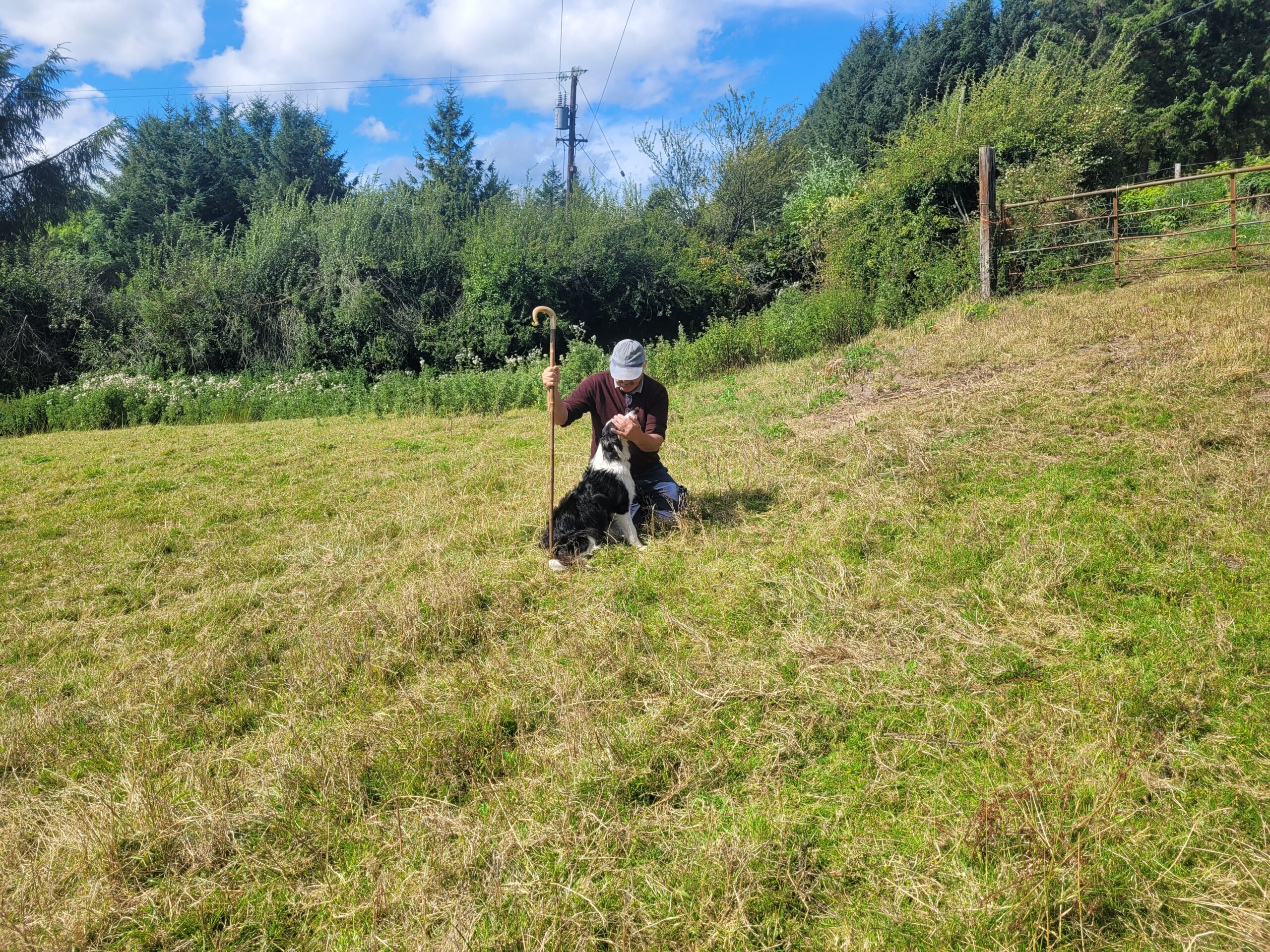Dara Waldron, Technological University of the Shannon (Midwest)
This playlist is influenced by research undertaken for a journal article titled ‘Film Symbiosis: Embodied spectatorship and sensory (auto)ethnography in Lucien Castaing-Taylor and Ilisa Barbash’s Sweetgrass’, published this spring in Moving Image Review and Art Journal. The article divulges a theory of representation and embodied spectatorship by way of Vivian Sobchak’s film phenomenology. Principally concerned with the film Sweetgrass by Ilisa Barbash and Lucien Castaing-Taylor (and its relevant association with ‘sensory ethnography’) film symbiosis is theoretically mapped from analysis of the ‘stare’ as a nonhuman property of film. The article examines the stare in Sweetgrass as a sensory feature of cinematographic form, evolving a theory of symbiosis useful as a supplementary method of critical scrutiny to ‘film identification’ as found pejoratively in psychoanalytic film theory.
The genesis and publication of the article was prolonged, interrupted by several personal crises. Over this time an autoethnographic strain evolved tangentially, based on border collie working sheepdogs in rural Ireland, around which a filmography of sorts formed. The films from this are largely concerned with farming in some facet, focusing on domestic animals as co-labourers or symbiotic partners to humans. Others, such as Ben Rivers’ Now, at Last and Bryony Dunne’s Surrender Your Horns take the extinction of animal life as a crucially ethical concern, focusing on exotic animals whose existence is under immediate threat. The last two films are masterpieces of European Cinema, focusing on a donkey and horse. The playlist will hopefully ignite a greater interest in the article which will hopefully then ignite interest in relationships between screen and animal representation in its aesthetic and ethical context.
***
Sweetgrass (Ilisa Barbash and Lucien Castaing-Taylor, US, 2009)
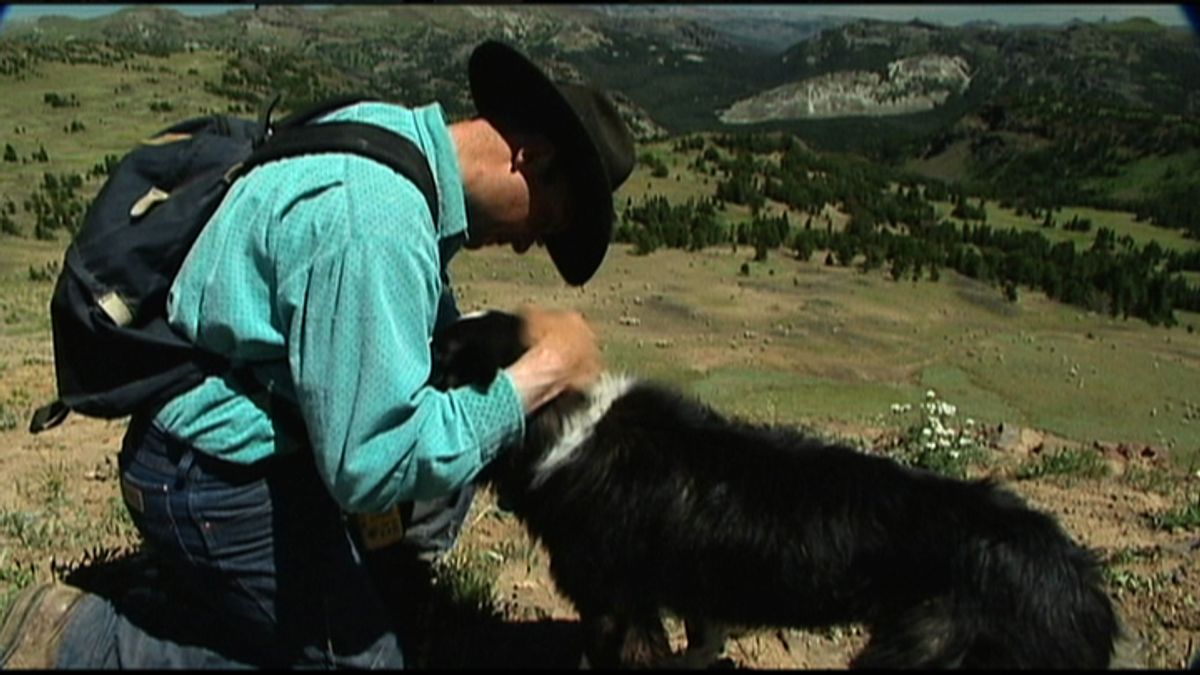
Released at much the same time as the second listed film, sleep furiously, Barbash and Castaing-Taylor’s Sweetgrass is an evocative homage to a lifestyle of co-existing animals and shepherds, as partners in the labour process. The film is an ethnographic study concerning the last movement of sheep across the Beartooth Mountains in the US Midwest. On one level it is an intrinsically observational film, capturing the reality of a custom in the process of disappearing. On the other it is a reflexive artwork that moves beyond the screen, the stare of the animal pushing through the diegesis to forge a symbiotic bond with the spectator. As per the aforementioned article, the film operates on a plane of symbiosis, where the usual foci of observation is animated with a nonhuman ‘stare’ that has ethical and aesthetic value in itself.
Sweetgrass is available to rent via Dogwoof.
sleep furiously (Gideon Koppel, Wales/UK, 2007)

Gideon Koppel’s sleep furiously is a homage to Trefeurig, a rural Welsh parish where his family, refugees from WWII, made home. The film focuses on farming livelihoods and the close ties inhabitants form with animals. Whether dogs as pets or workers of new-born lambs, the film presents, to paraphrase award-winning novelist John Banville, the least anthropomorphic vision of country life. This is evident in one scene when Koppel quietly documents a farmer caring for a lamb learning to walk. Strangely alluring in its simplicity, the scene is a purposeful example of the care the farmer invests in animal others holding a mirror to the care filmmaker and spectator can accrue via the experience of film as symbiosis.
sleep furiously is available to rent via the BFI Player.
La Quattro Volta (Michelangelo Frammartino, Italy, 2010)

There’s a moment in Frammartino’s sumptuous dialogue-free pang to the old shepherding ways of the countryside near Caulonia in Southern Italy when a kid goat is separated from the herd and tries in vain to recover. The vulnerability of the animal is felt as the aftermath of the shepherd’s death and symbiotic relationship between the shepherd and herd. Staring at the camera, the baby kid appears sentient, all too aware that death is looming. Frammartino’s masterful ability to deconstruct human and nonhuman animal hierarchy is purposefully felt as the kid, left behind and alone, gazes into the camera from a medium distance. It seems here like a reflexive gesturing towards Sweetgrass alluring and affecting in form, both concerned with symbiotic bonds between shepherd and herd, shepherd, and sheepdog, and perhaps no less importantly, the symbiotic bond between the embodied spectator and on-screen animal.
La Quattro Volta is available via Amazon.
Cow (Andrea Arnold, UK, 2021)
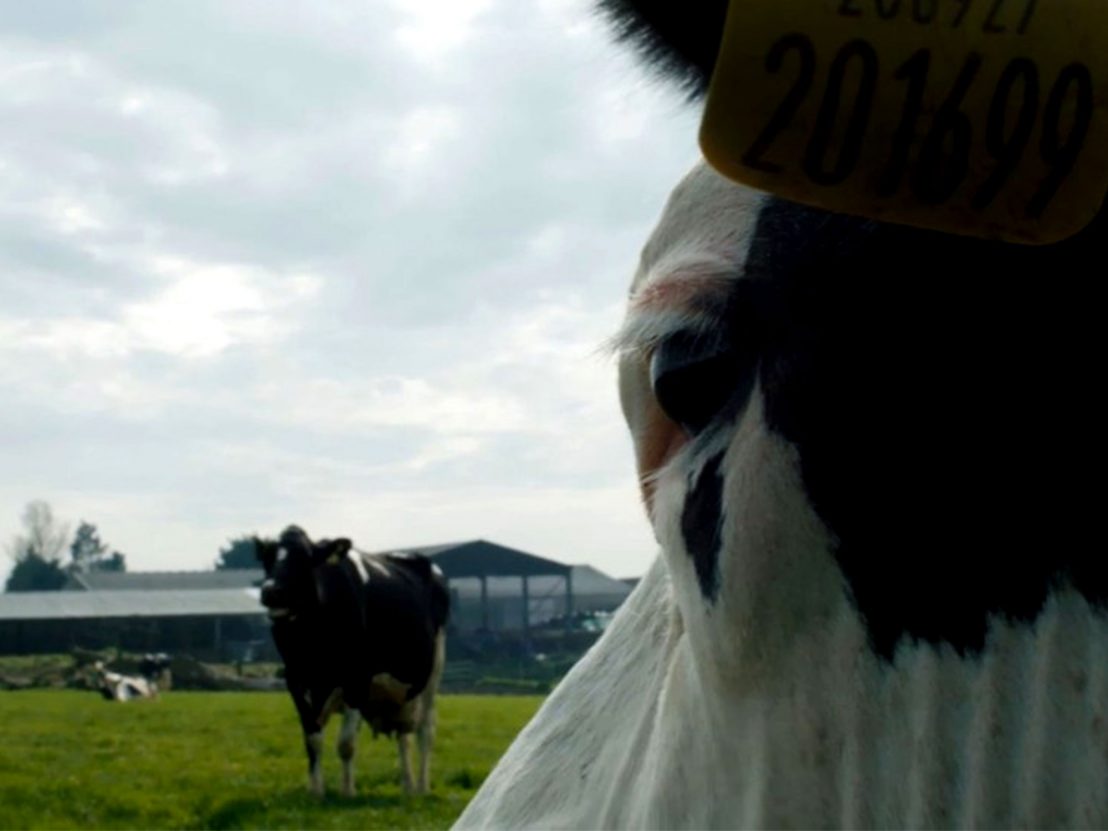
Peter Bradshaw’s review of British director Andrea Arnold’s first foray into nonfiction filmmaking, informs ‘Like Gunda, the most eerie moments come when we look directly into the cow’s eyes, as she is perhaps directly looking into ours – or at any rate, the camera lens – and mooing, repeatedly, intently, or even meaningfully. What is the cow seeing?’ The MIRAJ article underpinning this playlist explores the stare of the nonhuman animal, bent out of shape (in the case of sheepdogs) from predator to minder, as the punctum of representation. Film symbiosis involves an experience of living with based on asking what is the animal seeing? Arnold’s film about the life of a cow is, in this regard, a pertinent example. The film’s symbiotic emphasis on ‘living with’ supplements the act of looking at animals on screen. The mundane never-seen is elevated to the has-to-be-experienced; being-with a nonhuman animal.
Cow is currently available at Mubi and Curzon.
Now, at Last (Ben Rivers, UK/Brazil, 2018)
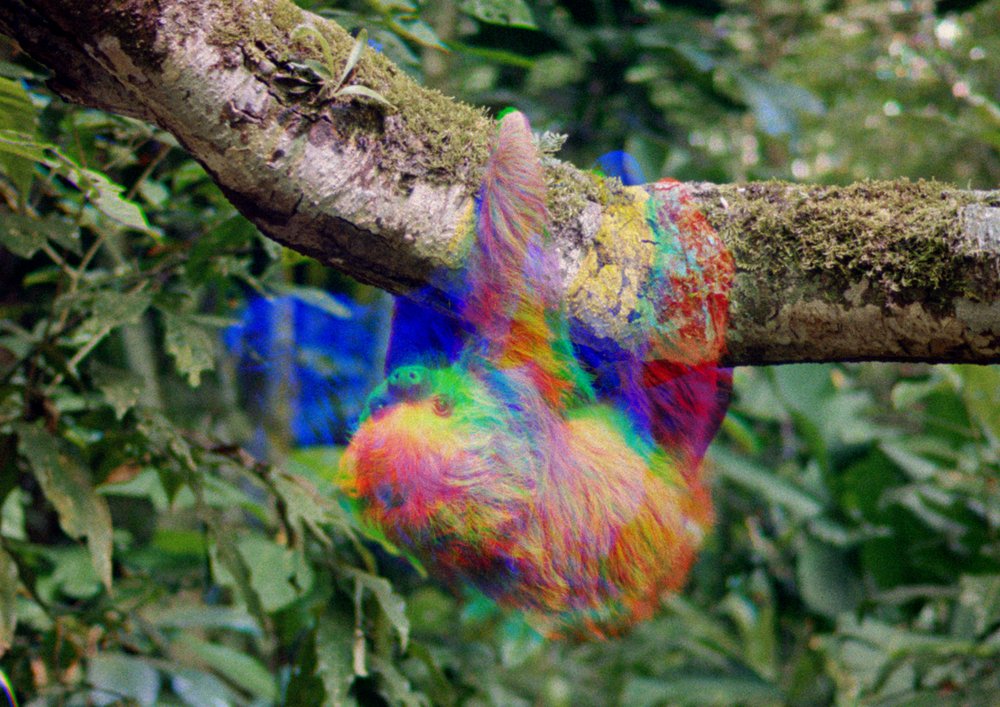
‘Sloth time’ is Ben Rivers’ concern in Now, at Last, a film about the Costa Rican sloth ‘Cherry’ moving ever so slowly on a tree. The film is a study of nonhuman animal temporality that uses an age-old filming process colouring the figure of the sloth at a crucial moment in the film (just as the Righteous Brothers’ ‘You’ve Lost that Loving Feeling’ begins to play against the jungle backdrop). The film invites us as spectators to experience the rhythms, speeds and slownesses, of sloth life, to enter, albeit temporarily, a symbiotic relationship with a ‘sloth’ derived from film experience. Rivers presents Now, at Last (2018) in cinematic and installation form, the film an experience that can be appreciated both in traditional black box cinematic form, but also in a contemporary gallery setting, the latter of which includes spatial and expanded dimensions to heighten the sense of being with Cherry.An excerpt of Now, at Last is available on Vimeo.
Hungry Hill (Mieke Vanmechelen and Michael Holly, Ireland, 2023)
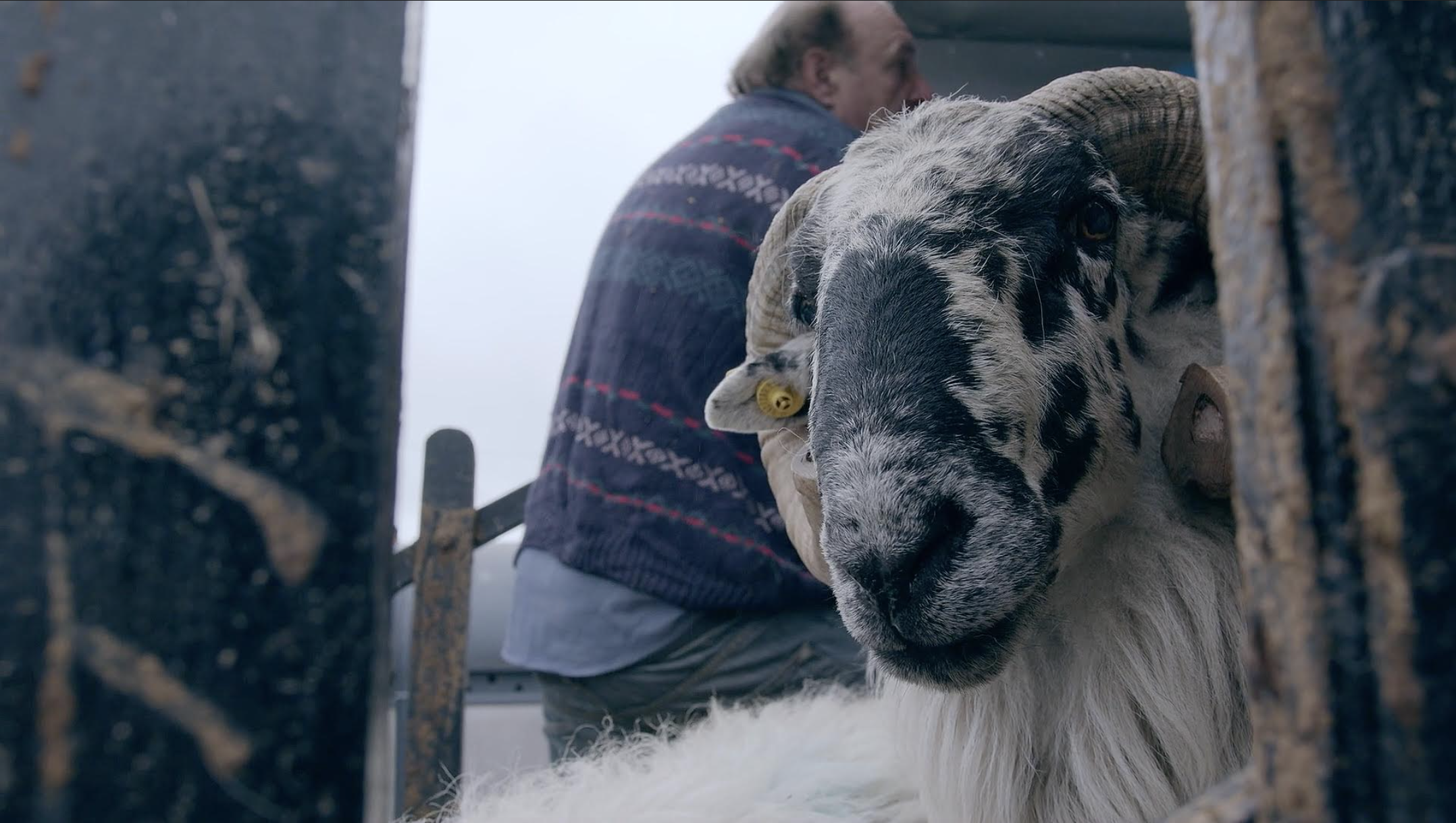
Filmed in rural Southwest Ireland, Hungry Hill tells the story of a sheep farming community in one of the sparsest settings on the island. Utilizing an embedded observational style, the film is an intimate portrait of the Vanmechelen family, who originally immigrated from Belgium/Holland to farm this rugged terrain. Focused on the relationship between the farmers, the sheep and mountains that are both the grazing pastures and the object of labour, the film is a pang to a rural way of life under threat from modernisation and globalisation. Underpinning the narrative’s release, is a story of symbiotic interdependence that operates at the level of the diegesis and the embodied experiences of the spectator. In one pre-eminently striking scene, the camera focuses in on the head of a sheep at a market fair, the sheep’s face something of a symbol for of the rural wisdom the film opposes to state-orchestrated bureaucracy, revealing the film to be a quiet critique of globalisation and its subsequent knowledge industries.
Watch the trailer for Hungry Hill on Youtube.
Surrender Your Horns (Bryony Dunne, Ireland, 2022)

Bryony Dunne’s Surrender with Horns is an original, inventive exploration of the criminal rhino horn trade that has led to the near extinction of white rhinos. Mixing fiction and nonfiction, archival and newly shot material, the film is something of a journey into the global industry of rhino horn trade, expositing myths and customs that have led to and enabled the industry to survive. Dunne exposes the longstanding nature of the trade from Rathkleale in Ireland’s Midwest to Africa and the Far East, eliciting – in the process – sympathy for the plight of the nonhuman other. At the heart of the film is a fictional prop concerning a man who snorts a rhino horn, becoming, in the process a hybrid of human and nonhuman. The focus on a minotaur hybridity within the film, is cast again as a kind of evocation of symbiosis, the deepfelt sympathy that divulges experience as a conduit of film.
Watch the trailer for Surrender Your Horns on Youtube.
Grizzly Man (Werner Herzog, US, 2005)

The maverick German director Werner Herzog’s Grizzly Man is the story of Timothy Treadwell, an activist who spends his summers on Alaskan grizzly bear sanctuaries, often filming the majestic beasts as a part of an ever-extending archive used to promote activism in schools around the US. The film is also a treatise on the nature of nature, on the potential for humans to enter symbiotic pacts with predatory nonhuman animals such as grizzlies. Herzog and Treadwell form an unlikely alliance, Herzog fascinated by Treadmills’ filmmaking pursuits but uneasy about the perceived relationship he forms with the bears he seeks to protect. Mesmerizing shots of Treadwell staring into the camera are synchronous with the nonhuman stare that operates within the frame of the video image, challenging the sensory machinations of the embodied spectator. Grizzly Man is a film about ‘living with animals’ but the film itself inquires, both at the level of form and content, into film’s capacity to render ‘living with’ an experience coterminous with an embodied experience of living with animals.
Grizzly Man is freely available to watch here.
Au Hazard Balthazar (Robert Bresson, France, 1966)

Bresson’s masterpiece about the fate of a village donkey called Balthazar is one of the few films in the European canon that makes the fate of a nonhuman animal the central narrative concern. Balthazar, an untrained donkey, made famous by Bresson’s film, is a canonical reference point across Bresson’s oeuvre, a figure often read as a symbol of Christ the redeemer. Beaten and abused, he maintains stoic loyalty, symbiotic with the film’s humans, no matter the treatment doled out. The attention paid to the subtlety of movement, the entanglement with the nonhuman animal, helps to engender a similar entanglement in the viewer. For Susan Sontag, this rather subtle ability of Bresson’s is a masterful orchestration of form. ‘The spiritual style’ can be seen as pivotal to the treatment of Balthazar as a modele, an animal who encapsulates all the subtleties of Being that Bresson is so concerned with in film.
Rent Au Hazard Balthazar via The Criterion Channel.
The Turin Horse (Bela Tarr, Hungary, 2011)

Filmed in trademark monochrome, the film process pared back to long takes that test the patience of the spectator (revealing the embodied act of watching), The Turin Horse is the final masterwork of maverick Hungarian auteur, Bela Tarr. Taking Frederik Nietzsche’s visit to Italy and his subsequent breakdown on witnessing a stubborn horse cruelly whipped by a coach driver, as inspiration, the narrative diverges from the origin tale – the scene when Nietzsche witnesses the life-altering event on a Turin Street – to fiction. Tarr relocates to the Hungarian plane, meticulously grafting and painstakingly focusing on the day-to-day travails of the coach driver and his daughter; and the horse who is being used in this section of the film by the coach driver to carry provisions. Symbiosis within the diegesis – the horse’s strained relationship with humans – is mirrored by the symbiosis brought about by the nonhuman stare, as the fate of the Turin horse becomes interlinked with our experience of time.
The Turin Horse is available to rent via Amazon.
***
With many thanks to Dara for sharing his thoughts on filmic symbiosis and for for putting this fascinating playlist together.
Dara Waldron teaches in Limerick School of Art and Design at the Technological University of the Shannon (Midwest). He is the author of two books concerning film and cinematic art, the most recent being New Nonfiction Film: Art, Poetics and Documentary Theory (Bloomsbury, 2018). His writing has appeared in international journals and magazines, including Millennium Film Journal and most recently herri. He is currently working material focused on the depiction of archival footage as time imagery, focusing on filmmakers and artists Pat Collins, Peter Delpeut, and Kamilla Kuc.
